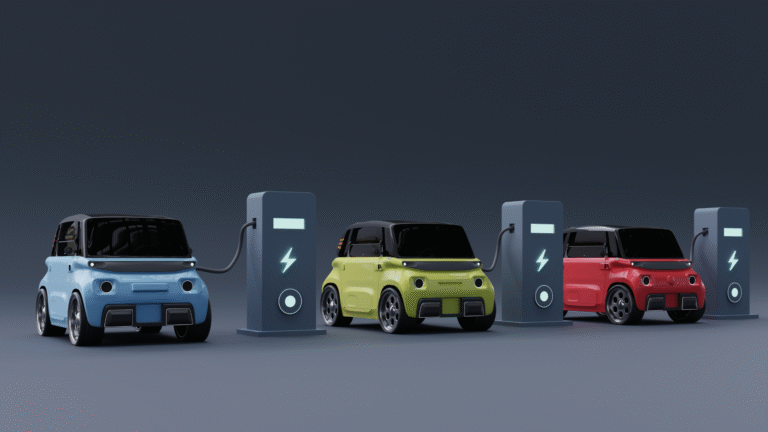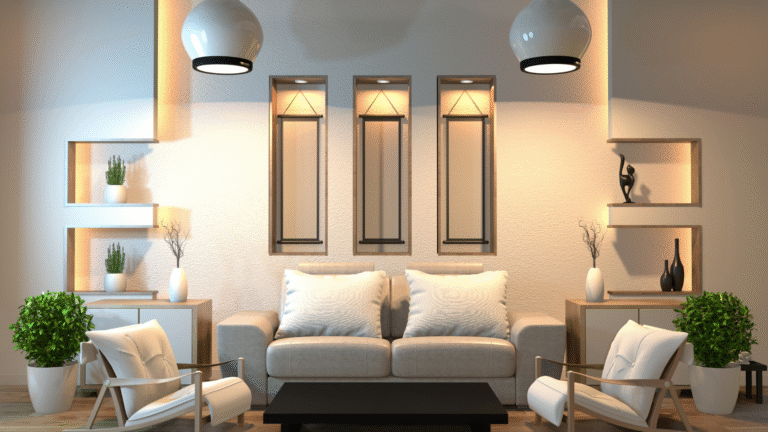Creating a smart home doesn’t have to drain your savings account or require a complete home renovation. With the right approach and strategic planning, you can transform your living space into an intelligent, automated environment that enhances comfort, security, and energy efficiency. Whether you’re a complete beginner to home automation or someone looking to expand your current setup without overspending, there are numerous cost-effective solutions available that can make your daily life more convenient.
The smart home market has evolved significantly over the past few years, making advanced technology more accessible to average homeowners. What once required expensive professional installation and complicated wiring can now be accomplished with plug-and-play devices that anyone can set up in minutes. This democratization of smart technology means you can start small and gradually build your automated home ecosystem based on your needs and budget.

1. Start with Smart Lighting Systems
One of the most impactful and affordable smart home setup options involves upgrading your lighting. Smart bulbs and switches offer immediate benefits while serving as an excellent introduction to home automation for beginners. These devices can dramatically reduce your energy consumption while providing convenient control over your home’s ambiance.
Smart bulbs are among the easiest smart home devices for beginners to install and use. Simply replace your existing bulbs with smart alternatives, and you’ll instantly gain the ability to control lighting remotely, set schedules, and adjust brightness levels. Many smart bulbs also offer color-changing capabilities, allowing you to create different moods for various activities throughout the day.
For renters who cannot modify electrical fixtures, smart bulbs represent the perfect solution. They require no permanent installation and can be easily moved when you relocate. Smart home for renters options like these make automation accessible regardless of your housing situation.
The energy savings from smart lighting can be substantial. These energy-efficient smart home devices automatically adjust brightness based on natural light levels and can be programmed to turn off when rooms are unoccupied. Over time, the reduced electricity bills can offset the initial investment in smart lighting technology.
Consider starting with the most frequently used rooms in your home, such as living areas and bedrooms. This approach allows you to experience the benefits immediately while keeping initial costs manageable. As you become more comfortable with the technology, you can expand to other areas of your home.
2. Install a Smart Thermostat for Energy Savings
A smart home thermostat setup represents one of the most cost-effective ways to reduce energy bills while improving comfort. These devices learn your daily routines and preferences, automatically adjusting temperature settings to optimize both comfort and efficiency. The potential energy savings often justify the initial investment within the first year.
Modern smart thermostats offer features that traditional units simply cannot match. They can detect when you’re home or away, adjusting temperatures accordingly to avoid heating or cooling empty spaces. Many models also provide detailed energy usage reports, helping you understand consumption patterns and identify additional opportunities for savings.
Installation of most smart thermostats is straightforward enough for DIY enthusiasts, though some situations may require professional assistance. Before purchasing, check your current system’s compatibility and wiring requirements. Many manufacturers provide online compatibility tools and detailed installation guides to help determine if professional installation is necessary.
Smart thermostats also integrate seamlessly with other smart home devices, creating a more comprehensive automation system. They can work with smart sensors to provide room-by-room temperature control or coordinate with smart blinds to optimize natural heating and cooling throughout the day.
The long-term benefits extend beyond energy savings. Smart thermostats often come with advanced features like air filter reminders, system diagnostics, and the ability to detect HVAC issues before they become expensive problems. This proactive approach to home maintenance can save significant money over time.
3. Enhance Security with Smart Home Security Systems
Affordable smart home security doesn’t require expensive monthly monitoring fees or complex installation procedures. Modern security devices offer professional-grade protection at consumer-friendly prices, making comprehensive home security accessible to budget-conscious homeowners.
Smart security cameras have become incredibly affordable while offering features that rival expensive professional systems. Many current models provide high-definition video, night vision, motion detection, and cloud storage options. Some cameras even include artificial intelligence features that can distinguish between people, pets, and vehicles, reducing false alarms.
Smart doorbells combine convenience with security, allowing you to see and speak with visitors regardless of your location. These devices often include motion detection and recording capabilities, providing an additional layer of security for your home’s entry points. For apartments and rental properties, wireless models offer full functionality without requiring permanent installation.
Motion sensors and smart door locks round out an effective security system. Motion sensors can trigger lights, cameras, or alerts when unexpected movement is detected, while smart locks provide keyless entry and the ability to grant temporary access to guests or service providers without sharing physical keys.
One often overlooked benefit of smart security systems is their potential impact on homeowners’ insurance premiums. Many insurance companies offer discounts for homes equipped with monitored security systems, and some extend these benefits to smart security setups. Check with your insurance provider to understand potential savings.
4. Create Voice-Controlled Smart Home Experiences
Voice assistants have revolutionized how we interact with our homes, making complex automation accessible through simple spoken commands. Setting up voice-controlled smart home functionality doesn’t require extensive technical knowledge or significant financial investment, yet it can dramatically improve your daily routines.
Smart speakers serve as the central hub for voice control, connecting various devices throughout your home. These devices can control lighting, adjust thermostats, play music, provide weather updates, and answer questions. The convenience of hands-free control becomes especially valuable when your hands are full or when you’re in another room.
The key to successful voice control implementation lies in choosing compatible devices and creating logical groupings. Start with basic commands for lighting and gradually expand to include other devices as you become more comfortable with the system. Most voice assistants allow you to create custom routines that trigger multiple actions with a single command.
Smart homes with Alexa and Google integration have become increasingly seamless, with most manufacturers ensuring their devices work with major voice platforms. This compatibility gives you flexibility in choosing devices while maintaining consistent voice control throughout your home.
Consider the learning curve for all household members, especially smart home devices for seniors who may need additional time to adapt to voice commands. Start with simple, frequently used commands and gradually introduce more complex automation as everyone becomes comfortable with the technology.
5. Implement DIY Smart Home Projects
DIY smart home projects offer the most budget-friendly path to automation while providing valuable learning experiences. These projects range from simple device installations to more complex automation scenarios that can save money compared to professional alternatives.
Smart plugs represent the easiest entry point for DIY automation. These inexpensive devices can make any appliance “smart” by providing remote control and scheduling capabilities. Coffee makers, lamps, fans, and other devices become part of your automated home with minimal investment and no technical expertise required.
Creating custom automation rules using smart home apps allows you to design complex scenarios without programming knowledge. For example, you might create a “movie night” routine that dims lights, adjusts the thermostat, and turns on entertainment devices with a single command. These personalized automations often provide more value than expensive pre-configured systems.
Smart sensors expand DIY possibilities significantly. Temperature sensors, humidity monitors, and contact sensors can trigger various responses based on environmental conditions or activities. A contact sensor on a mailbox can send notifications when mail arrives, while temperature sensors can trigger fans or alerts when rooms become too warm.
The DIY approach also allows for gradual expansion based on your specific needs and budget. You can start with basic devices and add more sophisticated components as you gain experience and identify areas where automation would be most beneficial.
6. Smart Home Automation Ideas for Apartments
Living in an apartment presents unique challenges for smart home implementation, but numerous solutions work perfectly in rental situations. Smart home for apartments focuses on devices that don’t require permanent installation while still providing significant benefits.
Wireless devices form the foundation of apartment-friendly automation. Battery-powered sensors, plug-in smart switches, and adhesive-mounted devices can provide comprehensive automation without modifying the property. These solutions are particularly appealing to renters who want smart home benefits without risking security deposits.
Smart home automation ideas for apartments often center around personal comfort and security within your living space. Smart air purifiers, humidifiers, and fans can improve air quality and comfort without requiring HVAC modifications. Smart window sensors can provide security alerts, while smart blinds offer privacy and light control.
Portable smart devices offer flexibility that traditional installations cannot match. Smart speakers, tablets used as control panels, and mobile devices ensure your automation system can move with you when you relocate. This portability makes the investment more valuable for renters who may move frequently.
Consider the noise implications of smart devices in apartment settings. Some devices, like smart vacuums or certain notification sounds, might disturb neighbors. Choose devices with quiet operation modes or customize notification settings to maintain good relationships with nearby residents.
7. Address Smart Home Privacy Concerns While Saving Money
Understanding and addressing smart home privacy concerns is crucial when building an affordable automation system. While budget-friendly devices offer excellent value, it’s important to understand what data they collect and how to protect your privacy without sacrificing functionality.
Many privacy concerns can be addressed through proper network setup and device configuration. Creating a separate network for smart devices, regularly updating device firmware, and reviewing privacy settings can significantly improve security. These steps cost nothing but time and can prevent potential privacy breaches.
Budget devices often come from lesser-known manufacturers, making research particularly important. Look for devices that offer local processing options, clear privacy policies, and regular security updates. While these features might slightly increase costs, they provide better long-term value through improved security and privacy protection.
Consider the data collection practices of different device categories. Voice assistants, security cameras, and smart displays typically collect more personal information than simple sensors or smart plugs. Understanding these differences helps you make informed decisions about which devices to include in your system.
Building privacy protection into your smart home setup from the beginning is more effective than trying to secure an existing system. This proactive approach ensures your automated home remains both convenient and secure as you add new devices over time.
Challenges and Considerations
While smart home technology offers numerous benefits, it’s important to understand potential drawbacks and challenges. Device compatibility can be complex, especially when mixing brands or trying to integrate older devices with newer systems. Research compatibility thoroughly before making purchases to avoid frustration and additional expenses.
Reliability concerns arise with some budget devices, particularly those from newer or lesser-known manufacturers. While these devices often offer excellent value, they may lack the support infrastructure and longevity of more established brands. Consider this trade-off when making purchasing decisions.
The learning curve for smart home technology can be steeper than expected, particularly for less tech-savvy household members. Plan for additional time to set up devices, create automation rules, and teach family members how to use new systems effectively.
Internet dependency is another consideration, as most smart home devices require consistent internet connectivity to function properly. Network outages can render some devices useless, so consider which functions are most critical and whether backup options are needed.
Best Smart Home Gadgets 2025
The current market offers exceptional value in smart home technology, with 2025 bringing improved features and lower prices across many categories. Smart displays have become more affordable while offering enhanced functionality for controlling other devices and providing information at a glance.
Multi-sensor devices that combine motion detection, temperature monitoring, and light sensing provide excellent value by replacing multiple single-purpose devices. These integrated solutions often cost less than buying individual sensors while simplifying installation and management.
Smart water leak detectors and smoke detectors offer peace of mind at reasonable prices. These safety-focused devices can prevent costly damage while integrating with your broader smart home system to provide alerts and trigger appropriate responses.
Energy monitoring devices help identify power-hungry appliances and optimize usage patterns. While the initial cost may seem unnecessary, these devices often pay for themselves through reduced energy bills and improved appliance maintenance.
Frequently Asked Questions
What are the most essential smart home devices for beginners?
Start with smart bulbs, a smart speaker, and smart plugs. These devices provide immediate benefits, are easy to install, and work together to create a foundation for future expansion. Smart bulbs offer lighting control and energy savings, smart speakers enable voice control, and smart plugs can automate any existing appliance.
How much should I budget for a basic smart home setup?
A basic smart home setup can be achieved for $200-400, including smart bulbs for key rooms, a smart speaker, several smart plugs, and a smart thermostat. This budget provides significant functionality while allowing room for gradual expansion as you identify additional needs and preferences.
Can renters install smart home devices without damaging property?
Yes, most modern smart home devices are designed for renters. Smart bulbs, plug-in devices, battery-powered sensors, and wireless cameras require no permanent installation. Always check your lease agreement and consider devices that don’t require modifications to electrical systems or permanent mounting.
Are budget smart home devices secure and reliable?
Budget devices vary in security and reliability, but many offer excellent value when chosen carefully. Look for devices from established manufacturers, read reviews focusing on long-term reliability, and ensure devices receive regular security updates. Proper network setup and device configuration significantly improve security regardless of price point.
How can I ensure my smart home devices work together?
Choose devices that support common standards like Wi-Fi, Zigbee, or Z-Wave, and select a central hub or platform that supports multiple device types. Popular voice assistants and smart home apps often provide the best compatibility across different brands and device categories, making integration simpler and more reliable.







